
At Tesoro, a Ginn development, there is a $48 million clubhouse, along with 750 empty lots.
"It’s Tee Time. Where Is Everybody?
Montverde, Fla.
OFF the turnpike here in central Florida, hidden behind stucco walls, sits a sprawling Tuscan-style clubhouse on a hill overlooking a string of lakes, a golf course and green fields.
This 1,900-acre property, called Bella Collina, was designed to hold 800 homes. Today, only 48 houses dot the landscape, and just three are occupied. The clubhouse, though open, is eerily quiet, and a promised swimming pool and equestrian center have yet to be built.
Bella Collina, the brainchild of Robert Edward Ginn III, looks like a ghost town. So does Tesoro, another resort opened by Mr. Ginn near Port St. Lucie, where just 150 houses sit on 900 lots. And the Conservatory in Palm Coast, also from Mr. Ginn, is even more barren: 335 out of 340 lots are empty.
As the real estate boom expanded in recent years, developers and home buyers believed that residential golf resorts were a sure-fire bet. Many buyers looked to buy properties that they could flip for a quick profit. Others were lured by stunning views, club services and security. While there is no reliable data on the growth in residential golf resorts, analysts say the market is well past its peak — particularly in the Sun Belt — and there is now an overabundance of developments.
“The aggressive building of new resort courses continued from the mid-1990s into the 2000s, contributing to an increasing glut of inventory that finally found no market,” said Joe Beditz, chief executive of the National Golf Foundation, a trade group that tracks data on the golf industry.
Mr. Ginn, 60, was able to cash in on the boom despite a spotty record that included some well-publicized failures on Hilton Head Island, S.C., in the 1980s. But when the real estate market began to tank in 2007, his empire came undone. “As property values plummeted, many investors had property worth less than their loans, and they were unprepared to pay their club and association fees,” says Toby Tobin, a Florida real estate agent.
Other golf resorts are also struggling. WCI Communities, which built resorts in Florida, Virginia and the Northeast, filed for bankruptcy in August. So did the Yellowstone Club in Big Sky, Mont., and three other resorts that, like some of Mr. Ginn’s, had loans arranged by Credit Suisse. Even the venerable Greenbrier Resort in West Virginia has sought bankruptcy protection.
For Mr. Ginn, a man who could sell 400 lots in a single day during the height of the real estate boom, it has been a huge comedown. While other developers may have built more golf resorts, few did so as grandly or as extravagantly. The tab for the 116,000- square-foot clubhouse at Tesoro reached $48 million.
“Most developers used consultants,” recalled Dean Adler, co-founder of Lubert-Adler Partners, a private equity firm in Philadelphia that invested in Mr. Ginn’s projects. “Bobby had a feel. He could be handed a topography map at a site and sketch out the entire resort.”
An amiable Southerner with a casual personal style, Mr. Ginn was a virtuoso at selling investors his vision of the luxe lifestyle.
“Bobby is very smooth and very likable,” said Hilton Wiener, a lawyer who bought an investment property at Tesoro. “He is a down-home guy who is not a pushy kind of salesperson.”
But when a new resort was in the works, Mr. Ginn knew how to generate a buying frenzy by holding lavish parties where potential buyers greatly outnumbered available lots, say agents and investors who attended the events.
“You would come to one of Ginn’s sales weekends and you would be drinking and thinking, ‘I hope I get chosen as one of the select few who gets to buy a lot,’ ” Mr. Wiener recalled. “The setting is very lush: hand-rolled cigars, fancy parties, vans with the Ginn name plastered on them.”
The high times ended when the market turned two years ago. Sales stalled, and Mr. Ginn had trouble paying off loans. Two of his properties, Tesoro and Quail West in Naples, Fla., filed for bankruptcy in December 2008 and were later sold for a fraction of what he had put into them. He sold Laurelmor, a resort in North Carolina, to another developer for $32 million. Mr. Ginn’s network of companies still owns the facilities at Bella Collina and the Conservatory.
Not all of Mr. Ginn’s 13 golf resorts are in such dire straits. But even at some of the most successful, like Reunion near Orlando, the Ginn Companies is considering programs to attract more buyers by offering fractional ownership at lower prices.
Mr. Ginn says his remaining properties will eventually pay off. “My belief is that when the depression ends, there will be a pent-up demand for happiness,” he said in an interview at his offices at the Hammock Beach Resort near Daytona Beach. “Sometime between 2035 or 2040, Florida will double in size.”
In the meantime, he faces dozens of lawsuits from angry investors alleging that his companies used deceptive and misleading trade practices in representing the demand for and value of his properties. “We will vigorously defend against these false allegations,” Mr. Ginn said.
BOBBY GINN grew up in Hampton, S.C., where his father was a small homebuilder. “I dropped out of school when I was 19 to go into the business because I always had a passion for building,” he said.
When Mr. Ginn was in his 30s, he worked with the Butcher brothers, Jake and C. H. Jr., Tennessee bankers who went to prison for bank fraud. In 1986, the Federal Deposit Insurance Corporation sued Mr. Ginn, contending that he had participated in a scheme with the brothers to defraud banks under the pretense of developing a property in that state. Mr. Ginn said he settled with the F.D.I.C. in the early 1990s and paid $500,000, without admitting wrongdoing. An F.D.I.C spokesman said the agency did not have documents from that period detailed enough to confirm Mr. Ginn’s account.
In 1985, he bought several resort and residential developments on Hilton Head Island, including such landmarks as the golf course where the Heritage Classic was played. “I liked the resort business more than building condos and shopping centers,” Mr. Ginn said. “Selling fun is more enjoyable.”
But his Hilton Head project did not prove to be a good investment. Some critics argue that he took on too much debt. As his cash-flow problems grew, a local radio station carried bulletins announcing when Ginn employees could safely cash paychecks and bumper stickers began appearing that said: “Honk if Bobby Owes You.”
Mr. Ginn sold his Hilton Head assets in 1986 to pay off debts, and declared personal bankruptcy two years later.
He resuscitated his career by working for Rochester Community Savings Bank in New York as a consultant on its investment in Wild Dunes, a North Carolina resort.
He got a big break in 1997, when Lubert-Adler started investing in his projects. Over the next decade, the firm, whose investors include the endowments for Harvard and Princeton, pumped about $800 million into his properties. Their partnership was structured such that the private equity firm put up all the money and took 80 percent of the profits.
The timing of the relationship couldn’t have been better. “Their business really took off after Sept. 11, when people turned from financial investments to hard assets,” said Robert Gidel, a former president of the Ginn Companies.
Mr. Ginn’s development style was unusual: he didn’t build clubhouses or other services until a large number of lots were sold. “Typically, developers start with a hotel or amenities because skeptical buyers want to see things,” Mr. Gidel said. “But here the market was so strong, and people wanted to believe.”
Dan Gerner, who owned a home in Quail West, one of the few developed properties that Mr. Ginn bought, said Mr. Ginn’s lavish spending ornamented his operation with all the trappings of success. At Quail West, Mr. Gerner said, Mr. Ginn “spent $12 million remodeling the clubhouse, and when the members didn’t like it, he spent $4 million more changing it.”
Many buyers bought several properties and hoped to flip them for a profit.
Even Mr. Adler, the Lubert-Adler chief, was personally involved in at least one deal at Tesoro. According to property records, he bought a parcel in 2004 and quickly sold it for a $205,000 profit.
A partnership formed by Mr. Adler and Mr. Ginn, A & G, also bought and sold five properties at Bella Collina for a $2.5 million profit over a period of weeks.
Those transactions raised possible conflict-of-interest questions, experts in private equity say, because the partnership bought property in developments that were also assets held by private equity funds that Mr. Adler was helping to oversee. Steven N. Kaplan, a professor of finance at the University of Chicago, said that transactions such as this can be problematic because investors in a fund are deprived of profits that potentially accrue to insiders who buy assets for themselves.
Mr. Adler says that although he bought the single property at Tesoro in his own name, he had actually “made a loan to two individuals to purchase that property.” He said that they — not he — kept the profits from the transaction and that they repaid him with interest.
As for the five properties purchased by A & G, Mr. Adler said the situation was “rectified.”
“I transferred my investment back to Mr. Ginn and never participated or received a penny of profit,” he said. Mr. Ginn confirmed Mr. Adler’s account.
The A & G deals are cited in a class-action suit filed last week in federal district court in Florida, alleging a scheme to sell properties based on fraudulent appraisals. Although Mr. Adler and Mr. Ginn are cited in the case, their firms, and not they as individuals, are named as defendants. Mr. Adler said he was no longer a partner in A & G when the transactions took place and denied any wrongdoing. Mr. Ginn said he had not seen the suit but also denied allegations of wrongdoing.
In 2006, Mr. Ginn’s partnership with Lubert-Adler borrowed $675 million from Credit Suisse, out of which it took a distribution of $332 million. (Mr. Adler said that his firm put back roughly that amount after sales slowed.) The partnership used the balance of the Credit Suisse loan to finance four resorts.
But the next year, the real estate market began to enter a free fall, and by 2008 the partnership couldn’t make payments on the Credit Suisse loan. Tesoro and Quail West filed for bankruptcy, and Laurelmor was sold. “There were no buyers and no market,” Mr. Tobin said.
Mr. Ginn says he now faces about 30 lawsuits.
According to one filed in a Florida circuit court, buyers were required to turn over their power of attorney to Richard T. Davis, a partner in a law firm that represented several Ginn companies, in order to buy land in Tesoro. The suit alleges that Mr. Davis signed documents that never provided detailed disclosures about costs, as the government requires. Since Mr. Davis was the companies’ closing agent, the suit contends, he knew that the disclosures were incomplete.
“I assure you that we tried to disclose everything that was out there,” Mr. Ginn said. Mr. Davis’s lawyer said the allegations were without merit.
The Florida suit also alleges that Mr. Ginn worked to artificially inflate the prices of parcels in his development. In one case, according to the lawsuit, a buyer bought two properties for a total of $1.007 million, and Mr. Ginn’s title company recorded the respective sale prices as $1.007 million and $1. The company then used the larger price as a “comparable” figure in an appraisal for Roy Bridges, a British financial adviser who bought a property for $1.195 million, according to appraisal records. Mr. Bridges’s property is now in foreclosure.
Mr. Ginn contends that “the county recorded it incorrectly.”
According to a transcript of a video obtained by a law firm representing property owners in the suit, a Ginn salesman told a group of potential buyers at Bella Collina that “Lot 5 sold for $2.1 million this morning.” But property records showed that the parcel sold for just $416,900, according to the lawsuit.
Mr. Ginn said he was “shocked because the salesman deviated from company practices.”
MR. GINN’S partnership with Lubert-Adler still has three properties left to develop and owns some land at existing resorts. “At this point, we have invested more than we have distributed back to investors,” Mr. Adler said. “We got hit by the economic tsunami, and we did not anticipate how tough it would be.”
Mr. Ginn says he is “ready to sell properties in trophy locations” when the market turns around.
“If you can’t sell,” he said, “you die.”



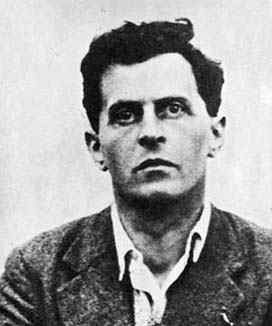






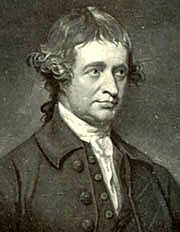


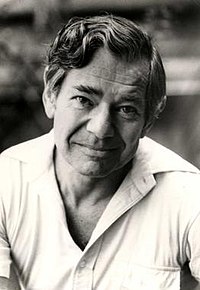










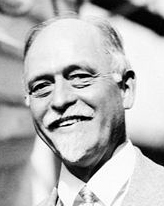



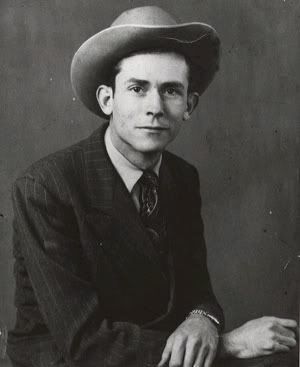







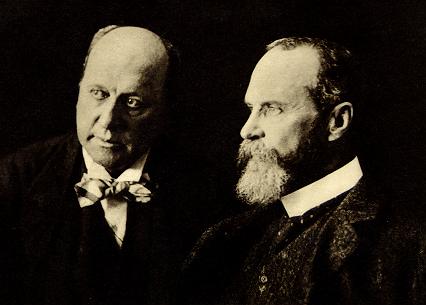


No comments:
Post a Comment